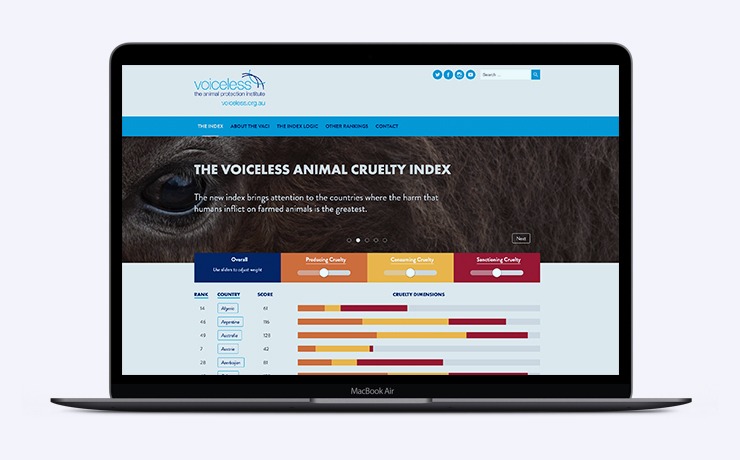What is Animal Cruelty?
Animal cruelty is commonly understood to mean actions or omissions that cause pain and suffering to animals. However, under the law in most countries, the legal definition of the term has a much more limited scope. Generally, criminalised cruelty is defined as the infliction of unreasonable, unnecessary or unjustifiable pain and suffering on an animal. Accordingly, under the law there are certain contexts where causing animal pain and suffering can be deemed reasonable, necessary or justified.
“For example, courts may be required to consider whether it is justifiable to castrate a pig without anaesthetic for pig meat production; reasonable to repeatedly whip race horses for entertainment purposes, or justifiable to kill bobby calves by means of blunt force trauma as part of milk production.” (Voiceless Animal Law Toolkit 2015)
What is Legalised Animal Cruelty?
Legalised animal cruelty refers to actions or omissions that cause pain and suffering to animals, yet are permitted under the law. Many of the standard practices involved in factory farming can be viewed as constituting legalised cruelty. It is widely accepted by animal welfare scientists that closely confining thousands of animals within sheds and cages and preventing them from exercising natural behaviours can cause significant welfare issues. However, these systems of production are legitimised and facilitated by industry guidelines and government animal welfare standards.
In Australia, Model Codes of Practice and Animal Welfare Standards and Guidelines normalise and sanction standard industry practices which may otherwise fall within the legal definition of cruelty. For example, industry guidelines permit the performance of painful routine husbandry procedures on farmed animals without the use of pain relief, including beak trimming chickens, disbudding calves, and tail docking and teeth clipping piglets. They also allow the use of restrictive housing systems, such as battery cages, which fail to meet the full welfare requirements of animals and which many consider to be cruel.
Under most anti-cruelty statutes in Australia, animal industries can claim compliance with industry guidelines as a defence or exemption from a cruelty prosecution. This effectively prevents standard factory farming practices from being challenged on cruelty grounds in court.
“… when it comes to farmed animals, it would seem that the very laws designed to prevent cruelty actively facilitate it.” (Voiceless Animal Law Toolkit 2015)
How can we measure and compare animal cruelty?
Measuring and comparing animal cruelty within and between jurisdictions can be a challenging task, especially given that some forms of cruelty are permitted by law. For this reason, Voiceless has launched the Voiceless Animal Cruelty Index (VACI), to offer a unique and accessible way of conceptualising and comparing animal cruelty across fifty countries. The VACI is an interactive online index which evaluates and ranks countries based on the nature, extent and intensity of cruelty associated with farmed animal production and consumption. The 50 countries profiled together account for almost 80% of the world’s farmed animal population. The Index assesses the suffering caused by producers and consumers of farmed animal products within these countries, as well as taking into consideration the quality and effectiveness of their animal protection laws and policies.
Access the Voiceless Animal Cruelty Index.

Animal Protection Around the World – who ranks best and worst?
Learn More
- Learn about the significant animal welfare issues associated with factory farming, the use of battery cages for egg production, broiler chicken farming, duck farming and intensive pig farming on our Hot Topics pages.
- Read about factory farming and animal cruelty on the Voiceless Blog.
- Learn more about legalised animal cruelty in the Voiceless Animal Law Toolkit.
- Access a detailed list of resources exploring factory farming and the law in Australia here.
Last updated September 2021

